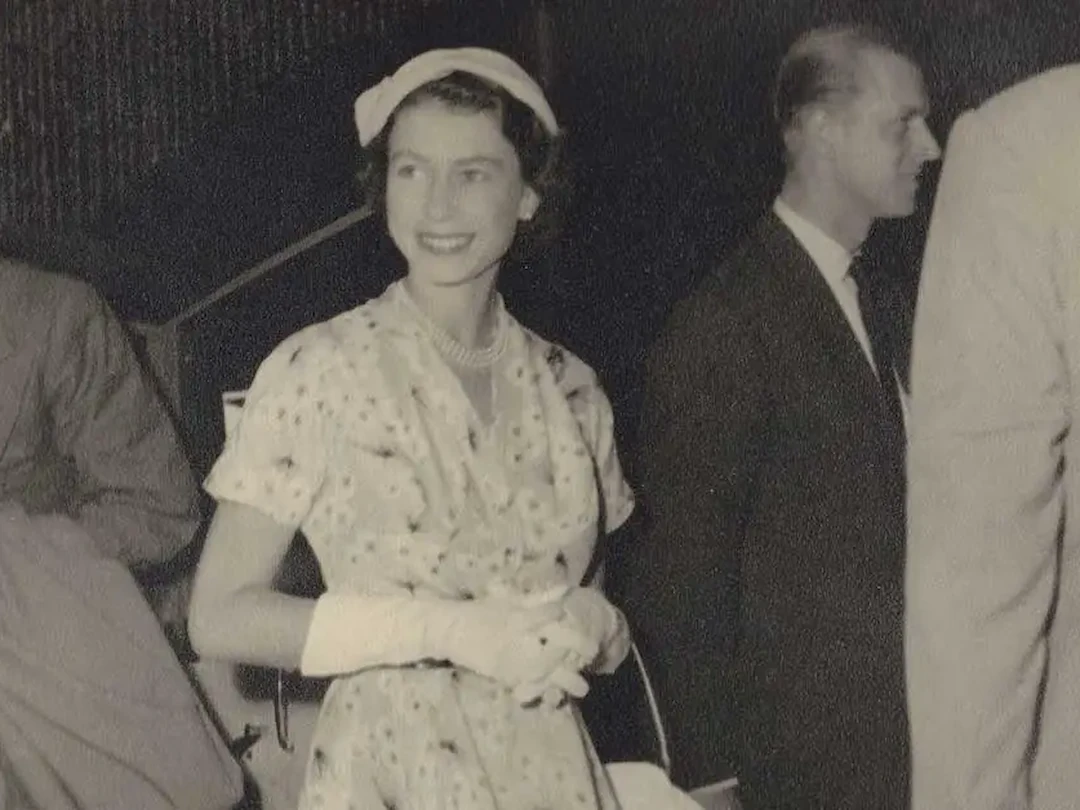Queen Elizabeth II’s 1954 royal visit to Ceylon (now Sri Lanka) remains one of the most memorable events in the island’s modern history. Among the many places she visited was the coastal town of Negombo, a city steeped in history and culture. The Queen’s visit to Negombo was not just a casual stopover; it held significance rooted in the town’s connection to the British Royal Family.
Why Queen Elizabeth II Visited Negombo?

From April 10 to 21, 1954, Queen Elizabeth II embarked on her first royal tour of Ceylon after ascending the British throne. During this visit, one of the key stops was Negombo, which was highly strategic due to its proximity to the Royal Air Force Negombo (RAF Negombo). This military base, located at what is now Bandaranaike International Airport, played a significant role in her visit.
RAF Negombo was a vital British military installation during World War II, and its prominence carried into the post-colonial era. The Queen’s interest in visiting this airbase was understandable, considering the military ties between Britain and its former colony. However, the decision to visit Negombo had more to do with personal family history than just its military importance.
You may ask, but why Negombo? Well, Negombo wasn’t just chosen as a convenient stopover for logistical reasons. According to records from the Royal Archives at Windsor Castle and the National Archives at Kew, London, the town’s historical ties to Queen Elizabeth II’s family played a big part in her visit.
Negombo had previously hosted her grandparents, King George V and Queen Mary, who visited in April 1901 prior to ascending the throne. Their stay at the Negombo New Rest House from April 12-15, 1901, left a lasting legacy, and the Queen’s visit in 1954 was partly an acknowledgment of this family history.
Additionally, during the Queen’s travels between Colombo and Katunayake, Negombo provided a serene rest stop. The organizers of her trip likely viewed it as the perfect place for the Queen to take a break while reflecting on her family’s past connections to the area.
The Negombo New Rest House: A Royal Destination
One of the most historically significant aspects of Queen Elizabeth II’s visit to Negombo was her stay at the Negombo New Rest House. This iconic inn gained international fame in the 1940s for serving exquisite seafood, making it a popular stop for international travelers. However, its true claim to fame was hosting King George V during his 1901 visit. In fact, the road adjacent to the inn was renamed “King George Drive” in his honor, a name that remains to this day.
The Queen stayed in Room No. 07 of the New Rest House, a room that had previously been occupied by her grandfather. Its 200-year-old architecture, including striking black wood rafters and a majestic view of the beach, provided a historic backdrop for the Queen’s visit. This room became synonymous with royal heritage, further solidifying the inn’s reputation as a prime destination for visitors interested in royal history.
Negombo: A Glimpse into Glamour and Tradition
Negombo’s cultural vibrancy was on full display during the Queen’s visit. As her motorcade made its way from the Katunayake Royal Air Force Base to Negombo, locals gathered in large numbers to greet her. The streets were filled with excitement, and the slow-moving motorcade allowed people to offer flower bouquets as tokens of their admiration. At the Negombo Lunakade Junction, the then-Mayor of Negombo, A.N. De Abrew officially welcomed the Queen, marking an important civic moment for the town.
Beyond the formal greetings, the Queen was treated to a uniquely cultural experience. The Easter season coincided with her visit, and the Negombo Island Easter Theater Group performed excerpts from traditional Easter plays. These performances, deeply rooted in the cultural and religious practices of Negombo, were a highlight of the Queen’s visit. Representatives from both the Church of England and the Catholic Church also greeted her, reflecting the town’s diverse religious heritage.
The Influence of the Royal Visits on Tourism
The Queen’s visit to Negombo didn’t just end with a few royal ceremonies—it left a lasting impact on tourism. Her stay at the Negombo New Rest House, combined with King George V’s earlier visit, brought international attention to this coastal town. Over the years, many tourists from both Sri Lanka and abroad were drawn to the inn, eager to experience a piece of royal history. Postcards featuring the inn became collectors’ items, and memorabilia from these royal visits were cherished by locals and tourists alike.
Negombo also played host to a significant event prior to the Queen’s arrival. The Duke of Gloucester and Lady Gloucester attended a departure dinner at the New rest houseafter participating in Sri Lanka’s first Independence Day ceremony. This event, along with the Queen’s later visit, established the inn as a prestigious venue for royal banquets and important political gatherings.
Key Landmarks Observed by the Queen
While in Negombo, Queen Elizabeth II took time to explore the town’s historical landmarks. Among the most notable was the old fort, which had been transformed into a prison during British rule. Although the fort was largely in ruins by the time of her visit, it remained an important colonial-era structure. The Queen also observed the Hamilton Canal, a significant piece of infrastructure built by the British during the colonial period. This canal, along with many other buildings from both the Dutch and British periods, continued to define the town’s architectural landscape.
Royal Meals and Cultural Experiences
The Queen’s time in Negombo wasn’t just about official ceremonies and sightseeing. Her stay at the Negombo New Rest House was marked by a distinctive dining experience. The Queen reportedly enjoyed “white hoppers,” a traditional Sri Lankan dish made from fermented rice flour. Alongside this, she was served a variety of tropical fruits, including mango, pineapple, papaya, and banana, all of which were said to be among her favorites.
To complement the meal, local performers entertained her with traditional Easter dramas and folk dances. These performances were a continuation of Negombo’s long-standing tradition of staging Easter plays, a cultural practice with roots in German drama that had been passed down through generations.
